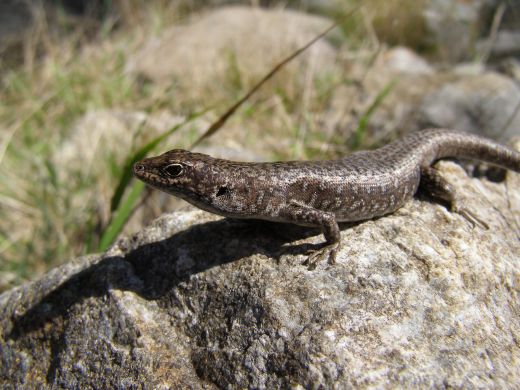
Does living in a cooler climate help slow down the ageing process?
New research from the University of Tasmania has found that this is true for lizards, with the results from a 20-year field study indicating mountain lizards age more gradually than their lowland counterparts.
The research team studied the Tasmanian spotted snow skink to better understand the processes behind how and why animals age. They discovered that environmental conditions had a major influence on the ageing process for individuals and populations.
University of Tasmania ecologist and PhD candidate Luisa Fitzpatrick said the monitoring program followed individuals from different climatic regions in Tasmania.
"This study used an unparalleled long-term dataset to examine how cellular ageing links to patterns of life history, such as how an individual grows and reproduces," Ms Fitzpatrick said.
"The fact that we have this incredible data in markedly different climates allowed us to extend this question to include how the environment influences these patterns."
Snow skinksare small, endemic Tasmanian skinks that live across broad climatic regions from the cold Central Highlands to comparatively warmer coastal areas.
The researchers examined the cellular ageing marker of telomere length to determine individual and population quality. Telomeres are caps on the end of DNA which protect important genetic coding information.
In most mammals and birds, including humans, telomeres get shorter with age. Short telomeres are linked to ageing processes such as age-dependent disease, grey hair, wrinkles, and ultimately to shorter lifespans.
"Lizard telomeres are particularly interesting because unlike humans, reptiles can lengthen short telomeres to maintain the cellular protection they provide," Ms Fitzpatrick said.
"We examined what influences telomere length at birth, and how these dynamics played out over individual lifetimes in the two lizard populations."
The study found population-specific results reflecting the different life histories the species exhibits in different climates. In the slower-growing cool highlands, they have longer telomeres and invest more in cell maintenance than the warm lowlands.
"Our results show that climate and life history influence telomere length in lizards. This information on the effect of climate on ageing patterns will provide a greater understanding of what influences variation in individual fitness," Ms Fitzpatrick said.
"Ultimately, this can inform population and species responses to large-scale environmental fluctuations such as climate change."
The paper "Individual telomere dynamics and their links to life history in a viviparous lizard" was published in the journal Proceedings of the Royal Society B.
(Pictured): The Tasmanian spotted snow skink (photo by Geoff While)






